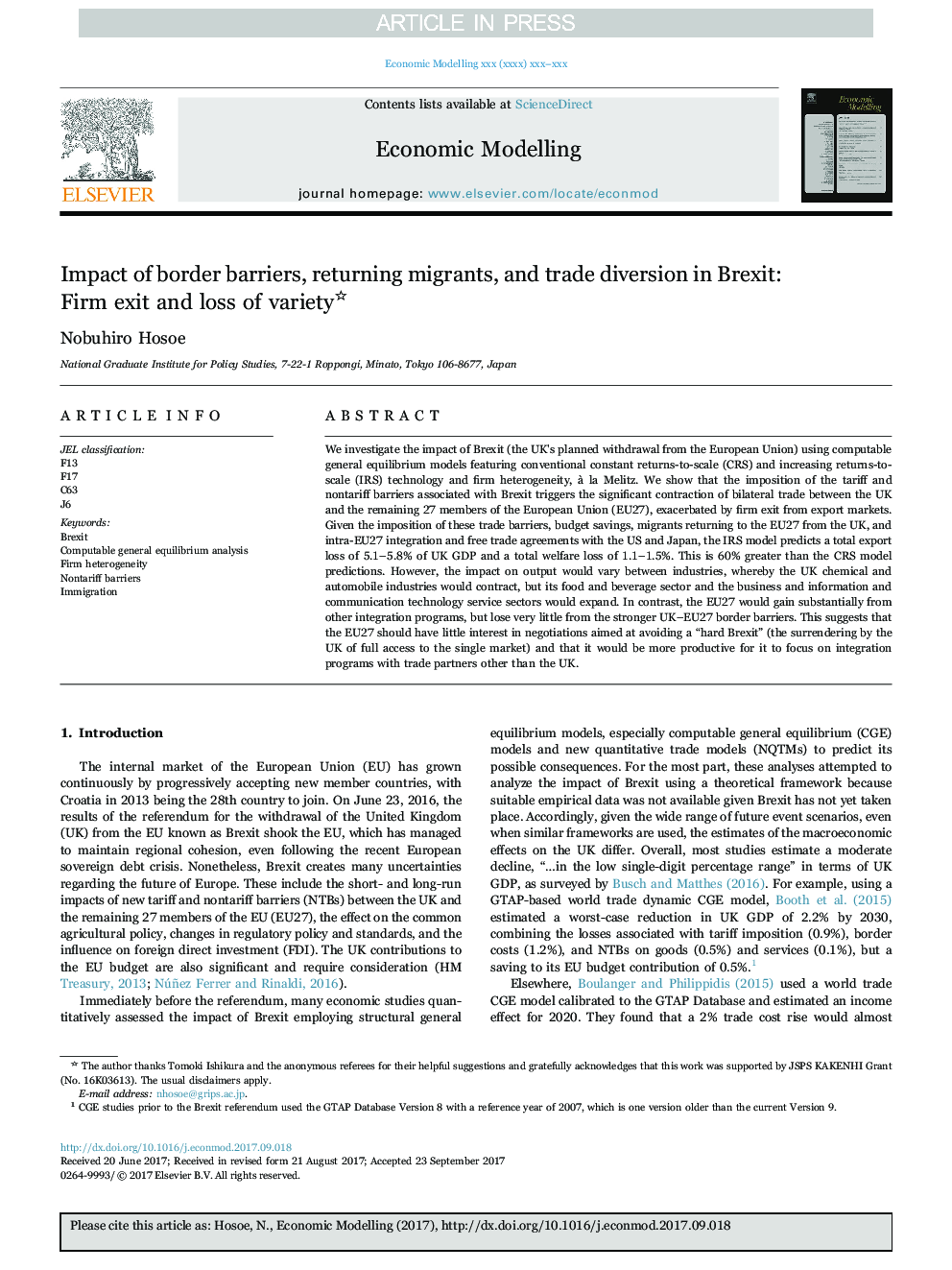| کد مقاله | کد نشریه | سال انتشار | مقاله انگلیسی | نسخه تمام متن |
|---|---|---|---|---|
| 7347476 | 1476500 | 2018 | 12 صفحه PDF | دانلود رایگان |
عنوان انگلیسی مقاله ISI
Impact of border barriers, returning migrants, and trade diversion in Brexit: Firm exit and loss of variety
دانلود مقاله + سفارش ترجمه
دانلود مقاله ISI انگلیسی
رایگان برای ایرانیان
کلمات کلیدی
موضوعات مرتبط
علوم انسانی و اجتماعی
اقتصاد، اقتصادسنجی و امور مالی
اقتصاد و اقتصادسنجی
پیش نمایش صفحه اول مقاله

چکیده انگلیسی
We investigate the impact of Brexit (the UK's planned withdrawal from the European Union) using computable general equilibrium models featuring conventional constant returns-to-scale (CRS) and increasing returns-to-scale (IRS) technology and firm heterogeneity, Ã la Melitz. We show that the imposition of the tariff and nontariff barriers associated with Brexit triggers the significant contraction of bilateral trade between the UK and the remaining 27 members of the European Union (EU27), exacerbated by firm exit from export markets. Given the imposition of these trade barriers, budget savings, migrants returning to the EU27 from the UK, and intra-EU27 integration and free trade agreements with the US and Japan, the IRS model predicts a total export loss of 5.1-5.8% of UK GDP and a total welfare loss of 1.1-1.5%. This is 60% greater than the CRS model predictions. However, the impact on output would vary between industries, whereby the UK chemical and automobile industries would contract, but its food and beverage sector and the business and information and communication technology service sectors would expand. In contrast, the EU27 would gain substantially from other integration programs, but lose very little from the stronger UK-EU27 border barriers. This suggests that the EU27 should have little interest in negotiations aimed at avoiding a “hard Brexit” (the surrendering by the UK of full access to the single market) and that it would be more productive for it to focus on integration programs with trade partners other than the UK.
ناشر
Database: Elsevier - ScienceDirect (ساینس دایرکت)
Journal: Economic Modelling - Volume 69, January 2018, Pages 193-204
Journal: Economic Modelling - Volume 69, January 2018, Pages 193-204
نویسندگان
Nobuhiro Hosoe,